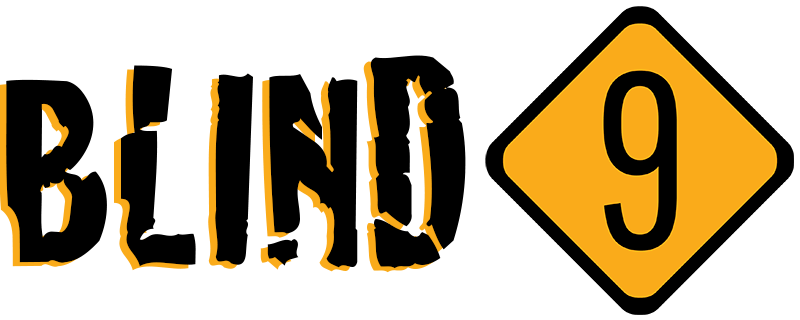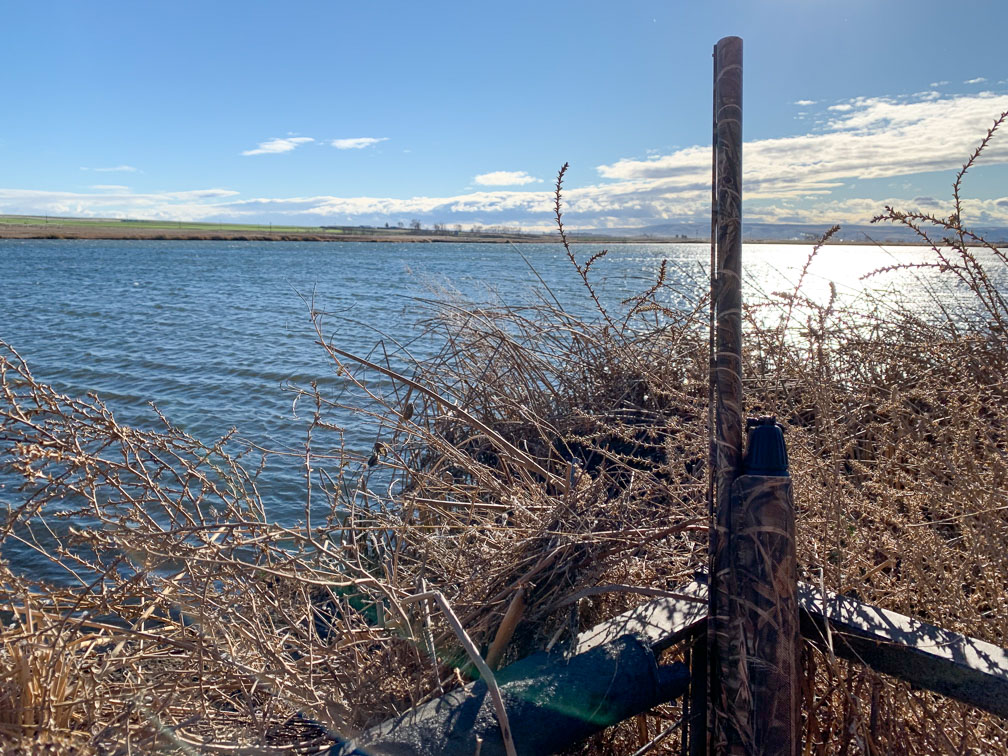This would be my first hunt at McNary this season and it was going to be a very windy day, which typically means good things for duck hunters.
It was also an early December date, which is a time of transition for birds. At this time of year you could find yourself shooting a locals or you could be on the vanguard of a migration and getting flooded with new birds in the area.
On this day we got a little of both.
Picking the Blind
We had pick 14 on this day and ended up getting the 8th pick after no-shows. Our Top 7 blinds were in the northern part of the slough and were not available. The northern slough has been seeing better duck-per-blind numbers versus the southern part.
A fire swept through the southern part of the refuge a few years ago, destroying the high thules that used to tower seven to eight feet over the banks. They are only just starting to grow back, although it appears the refuge is taking active steps to keep this natural cover from growing too high.
So we had to settle on a blind in the less-productive southern slough. Blind 15 had been on our list because it had some random successful days and on average performs better that the others. I also have hunted blind 15 in the past and had some amazing hunts there.
It’s location on the West side of the slough meant that it would have some advantage of having a crosswind or a even a wind going away from the blind, which would be ideal shooting conditions. We preferred it over blinds on the east side this day, which would be likely to have winds coming right into their faces.
Preparing for High Winds at Blind 15
Windy weather marked the forecast for this date at least a week ahead of time. Cold weather and snow had started hitting areas in southern Canada so we hoped we would be getting a good number of new birds.
Winds were forecast to be out of the South Southwest most of the day, with late morning winds of 20-30 mph with gusts up to 50 mph.
Those kinds of winds can be a little high for duck hunting. Ducks flying with the wind will whip by you at nearly unshootable speeds. If you do manage to hit one and only wound it, it’s likely to travel a long ways away from you before it splashes in the water or dumps into some weeds, making retrievals more difficult.
On the other hand, ducks traveling against the wind will seem nearly suspended in the air. These make deceptive shots, as you will still need to lead the bird a little to compensate.
When we set up decoys, we arranged most of our decoys in a tight group near the shore starting about 10 yards upwind of the blind (you can check my post on decoying wary ducks for spread diagrams). This would leave room for birds to drop in and land right in front of the blind. It was a setup we stayed with most of the day, only refining it here and there.
What to do When You’re Not on the X
It turns out that our choice of Blind 15 really worked against us. The next time I face stronger south winds, I would definitely seek a blind on the upwind side of the slough.
Our reality was that the birds had no interest in our blind. Birds coming from the north first zoomed over Blind 21 across the slough from us. The hunter in 21 would take passing shots on anything close and would spook most anything before they even had a chance to look at us. It’s hard to judge whether he was taking quality shots, but I did see a number of wounded birds coast way away from his blind and not get retrieved.
Birds coming off the river from the south would swing into the middle of the slough and immediately look at blind 16 or blind 17, both of which got a lot more action than we did. No amount of calling or decoy fiddling helped. It’s too bad because some birds were obviously migrants and decoyed aggressively.
With a less-than-desirable location, we had to wait between good quality shots and then missed a few easy shots, unfortunately. Our blind, in the downwind corner of the slough, just did not have the mojo or airspace on this day. We had to wait for the hunters in 21 and 16 to leave before things began to pick up.
The Final Word
We ended up with 5 mallards, 2 of which we got in the first 15 minutes of the hunt. The final 3 we got only after the hunters in Blind 16 and Blind 21 had left. The lesson I learned was to choose a blind in the upwind side to give birds plenty of room over water to drift into your spread.

